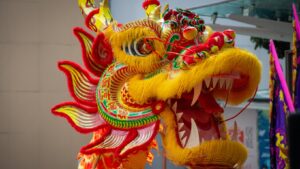Diving into the world of ca sƒ© v≈© tu·∫•n h√πng it’s clear there’s a lot to uncover. This intriguing topic, steeped in history and brimming with cultural significance, has captured the attention of many. It’s a subject that’s as complex as it is fascinating, and it’s no wonder it has drawn so much interest.
![]() In the coming paragraphs, we’ll delve into the intricacies of ca sƒ© v≈© tu·∫•n h√πng. We’ll explore its origins, its impact, and why it continues to be a topic of discussion today. So, if you’ve been curious about ca sƒ© v≈© tu·∫•n h√πng you’re in the right place. Let’s dive in and learn together.
In the coming paragraphs, we’ll delve into the intricacies of ca sƒ© v≈© tu·∫•n h√πng. We’ll explore its origins, its impact, and why it continues to be a topic of discussion today. So, if you’ve been curious about ca sƒ© v≈© tu·∫•n h√πng you’re in the right place. Let’s dive in and learn together.
Ca Sĩ vũ tuấn hùng
Delving deep into the birthplace of ca sƒ© v≈© tu·∫•n h√πng unravels a rich tapestry of history and culture. Born in the heart of Southeast Asia, this form of art is steeped in tradition. Its roots trace back centuries ago, marking it as one of the region’s most ancient and treasured practices.
 Understanding ca sƒ© v≈© tu·∫•n h√πng origin is synonymous with getting into the heart of Southeast Asian culture. Scholars contend it’s born out of the intermingling of indigenous practices and external influences. Over time, it morphed into a distinct mode of expression, embodying the unique spirit of the region.
Understanding ca sƒ© v≈© tu·∫•n h√πng origin is synonymous with getting into the heart of Southeast Asian culture. Scholars contend it’s born out of the intermingling of indigenous practices and external influences. Over time, it morphed into a distinct mode of expression, embodying the unique spirit of the region.
The birth of ca sƒ© v≈© tu·∫•n h√πng is intertwined with the region’s history. It quite literally gave voice to the narratives and experiences of the inhabitants. Every melody, beat, and rhythm carries with it stories passed down from one generation to another. It’s more than a mere art form. It’s a living testament to the people’s resilience, creativity, and spirit.
 Ca sƒ© v≈© tu·∫•n h√πng creativity didn’t grow in isolation. It thrived amidst a dynamic interchange of ideas, cultures, and beliefs. From its early conception, it absorbed elements from various art forms and cultures, shaping it into the multifaceted expression it is today.
Ca sƒ© v≈© tu·∫•n h√πng creativity didn’t grow in isolation. It thrived amidst a dynamic interchange of ideas, cultures, and beliefs. From its early conception, it absorbed elements from various art forms and cultures, shaping it into the multifaceted expression it is today.
Much of the art’s enduring appeal rests on this fluidity and adaptability. Today, ca sƒ© v≈© tu·∫•n h√πng bears witness to its evolution, marrying the old with the new, the traditional with the modern, the indigenous with the foreign.
Cultural Significance
 Beginning as a local art form, ca sƒ© v≈© tu·∫•n h√πng quickly became a cultural masonry – a canvas revealing the deep-rooted customs and beliefs of the Southeast Asian societies. When one peers into ca sƒ© v≈© tu·∫•n h√πng they’re not just appreciating an artistic expression. Instead, one’s delving into a thousand-year-old living organism that connects the past with the present and future. Through every verse and melody, stories of resilience and bravery, of love and despair, are expressed – stories that helped to shape the identity and awaken the spirit of the Southeast Asian nations.
Beginning as a local art form, ca sƒ© v≈© tu·∫•n h√πng quickly became a cultural masonry – a canvas revealing the deep-rooted customs and beliefs of the Southeast Asian societies. When one peers into ca sƒ© v≈© tu·∫•n h√πng they’re not just appreciating an artistic expression. Instead, one’s delving into a thousand-year-old living organism that connects the past with the present and future. Through every verse and melody, stories of resilience and bravery, of love and despair, are expressed – stories that helped to shape the identity and awaken the spirit of the Southeast Asian nations.
It’s not an exaggeration to say that ca sƒ© v≈© tu·∫•n h√πng has been a kind of cultural bridge. As it developed, external influences were absorbed and merged with the core traditions. This ability to adapt contributed to its universal appeal and endurance. Throughout changes and upheavals, ca sƒ v tun hπng preserved the distinct cultural character of its people, remaining authentically tied to its origins.
 However, ca sƒ© v≈© tu·∫•n h√πng isn’t only a mirror of the past. As it evolved, the art form continued to weave in contemporary themes and realities, ensuring its ongoing relevance. This capacity to evolve while preserving traditions characterizes its enduring power and face.
However, ca sƒ© v≈© tu·∫•n h√πng isn’t only a mirror of the past. As it evolved, the art form continued to weave in contemporary themes and realities, ensuring its ongoing relevance. This capacity to evolve while preserving traditions characterizes its enduring power and face.
Bridging Generations
The cultural resonance of ca sƒ© v≈© tu·∫•n h√πng in Southeast Asian communities can’t be understated. It’s a testament to the power of shared narratives in bridging generations. Despite facing criticism and being labeled as outdated, it stands tall, defended by traditionalists who see its value in cultural preservation. While challenges persist in its documentation and transmission, the lack of resources doesn’t deter advocates from pushing for its modernization.

